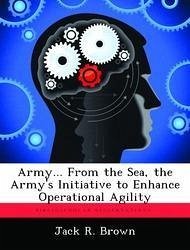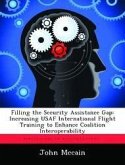The Army as part of its strategic mobility program (ASMP) recently launched its Army Prepositioning Afloat (APA) program also known as Army War Reserve -3 (AWR-3). The intent is to preposition a heavy brigade and a theater sustainment package afloat in order to bolster up some of the identified shortfalls that the Army experienced during Desert Storm. APA, as the Marine Corps' Maritime Prepositioning Force (MPF), is designed to give the Army a rapid entry capability into a theater of operations. This study analyzes why the Army is prepositioning a heavy brigade afloat while the Marine Corps already has a preexisting program that provides forces for crisis response. The analysis demonstrates that the change in Army prepositioning to include a heavy brigade afloat is necessary to meet the changing threat and to comply with the National Security Strategy (NSS)1 National Military Strategy (NMS), the Mobility - Requirements Study (MRS) and identified requirements by the CINOs. This analysis concludes that the Army's combat brigade afloat initiative is an enabling force of theater level campaigning with unique and complementary capabilities. The Army's brigade afloat program provides from the sea -- a versatile, lethal, sustainable, and expansive heavy brigade. APA is critical to insure the nation has the capability to quickly project heavy combat power. The combination of APA and MPF gives a CINO a catalog of options to mix based upon his METT-T (Mission, Enemy, Troops available, Terrain, and Time) assessment. The monograph is 44 pages long, 66 with appendices and notes.
Hinweis: Dieser Artikel kann nur an eine deutsche Lieferadresse ausgeliefert werden.
Hinweis: Dieser Artikel kann nur an eine deutsche Lieferadresse ausgeliefert werden.








